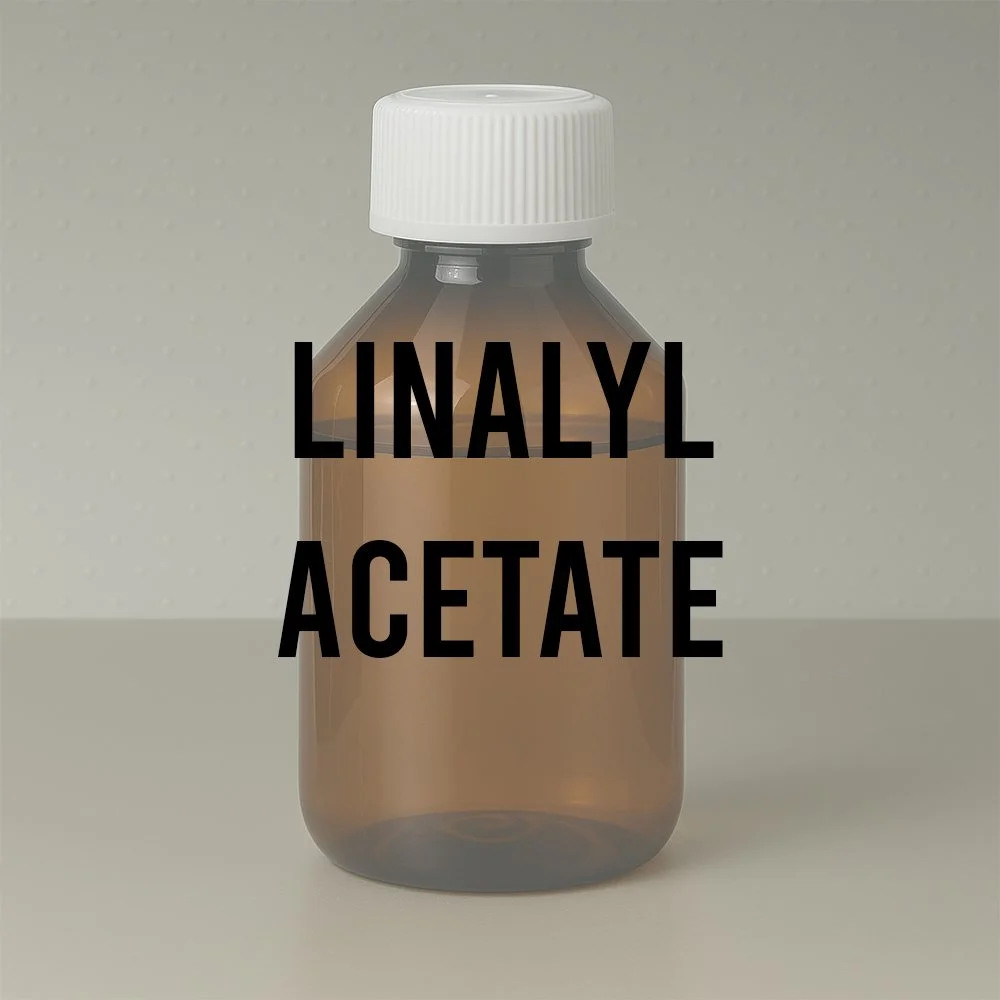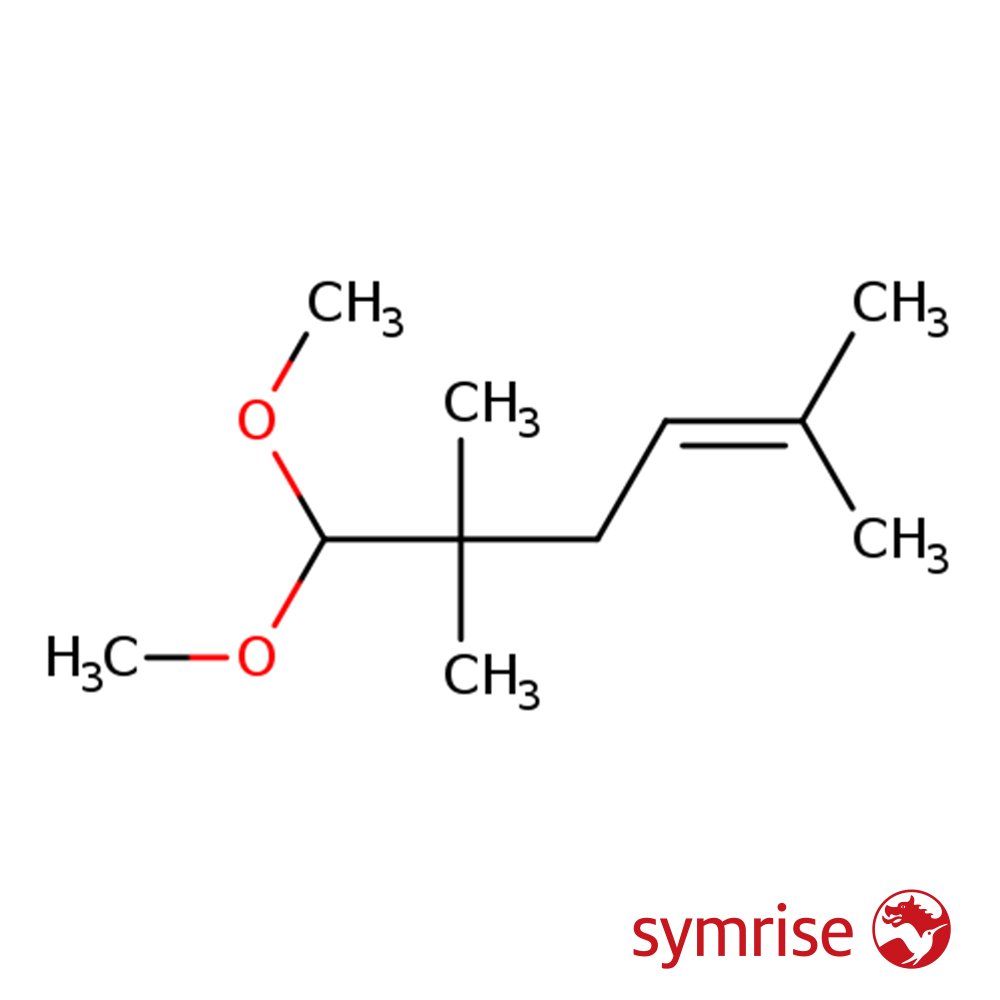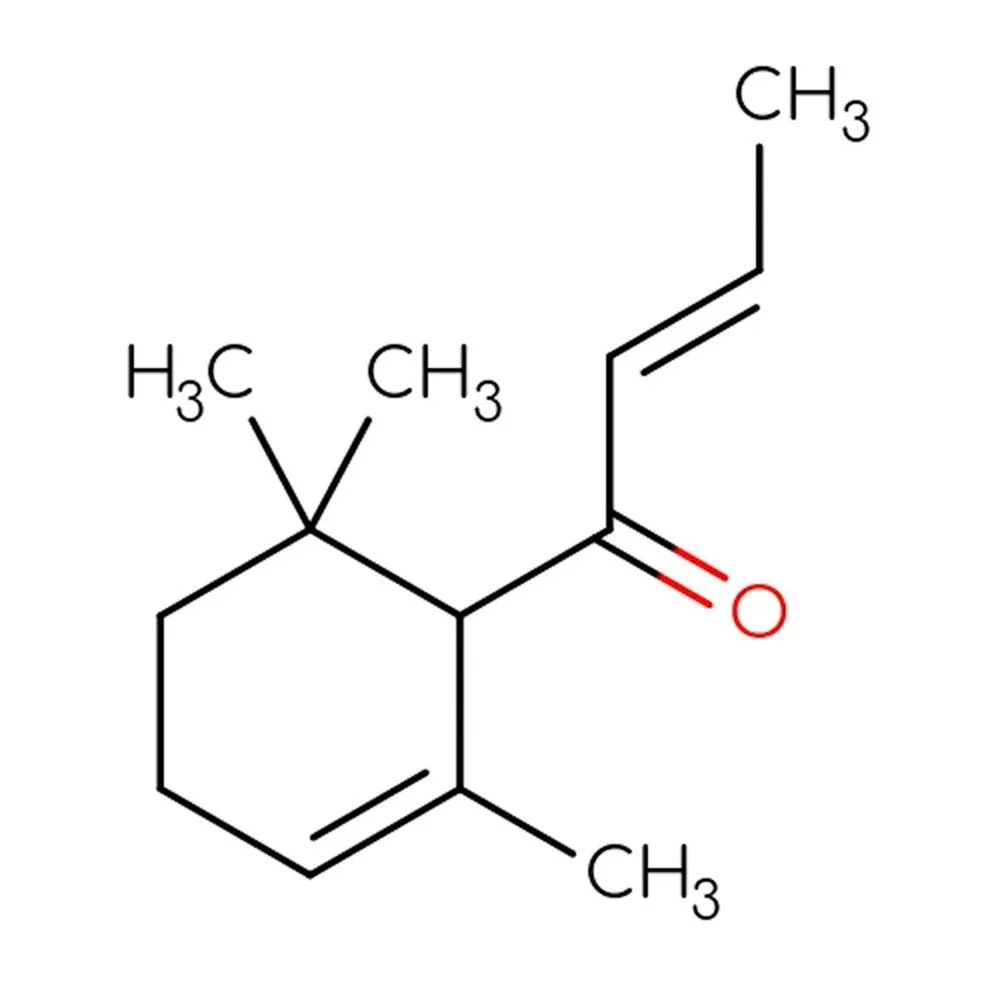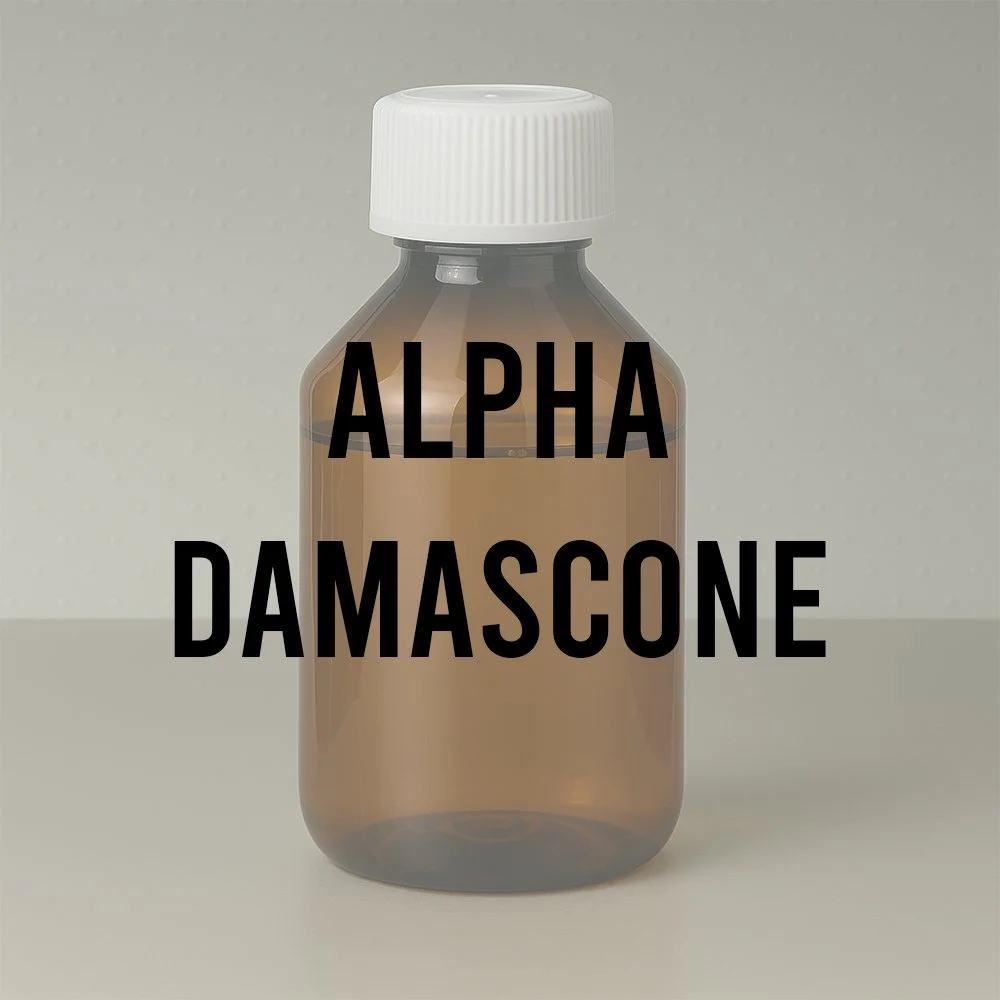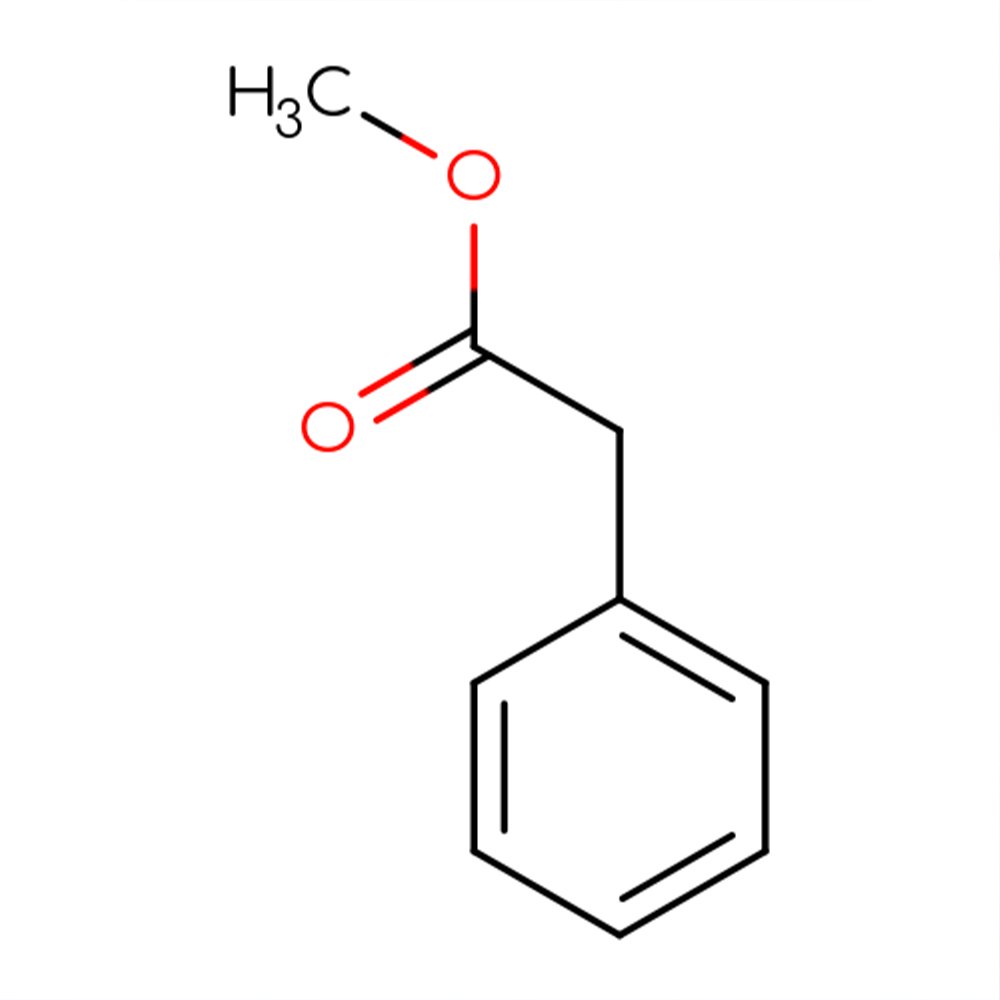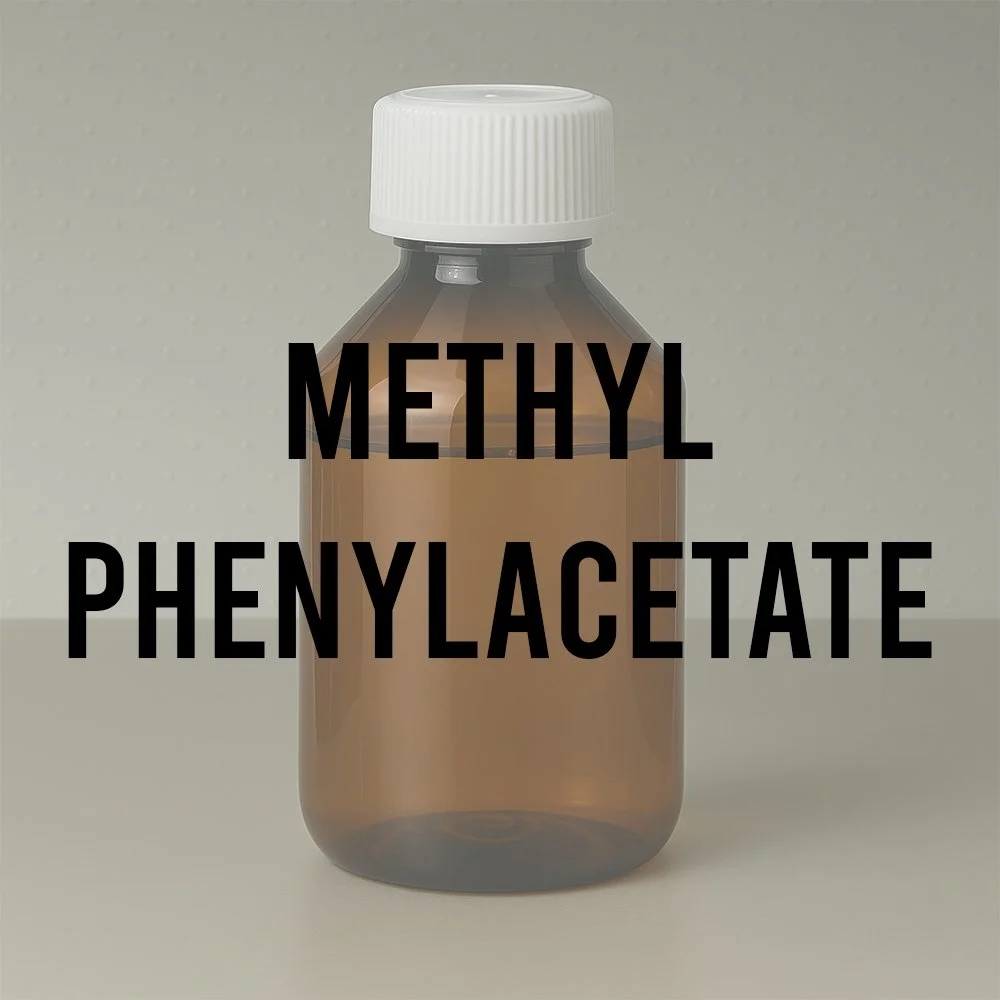Linalyl Acetate Technical Ingredient Overview
🔎 Chemical Name — 3,7-Dimethylocta-1,6-dien-3-yl acetate
🧪 Synonyms — Bergamol, Bergamiol, Linalool acetate, 1,5-Dimethyl-1-vinyl-4-hexenyl acetate, Licareol acetate, Phanteine, 3,7-Dimethyl-1,6-octadien-3-ol acetate, Acetic acid linalool ester
📂 CAS Number — 115-95-7
📘 FEMA Number — 2636
⚖️ Molecular Weight — 196.29 g/mol
📝 Odor Type — Floral-Citrus-Herbaceous
📈 Odor Strength — Medium to Intense
👃🏼 Odor Profile — Fresh, zesty bergamot-lavender character with green, woody facets; clean herbaceous top note with citrus-floral body; fruity nuances reminiscent of pear, pineapple, and gooseberry
⚗️ Uses — Essential top-note modifier in bergamot, lavender, lilac, linden, neroli, ylang-ylang, and chypre compositions; citrus enhancer; floral blender; GRAS-approved flavoring agent in foods at 2-15 ppm
🧴 Appearance — Colorless to pale yellow clear liquid; density (d₂₀) approximately 0.895-0.901 g/mL; refractive index (n₂₀/D) 1.448-1.453
What is Linalyl Acetate?
Linalyl Acetate is a monoterpene ester that functions as the acetate ester of linalool, naturally occurring as a principal component in lavender oil (30-60% depending on origin), lavandin oil (25-50%), bergamot oil (30-45%), and clary sage oil (up to 75%) (Surburg & Panten, 2006). Chemically classified as a tertiary aliphatic acetate ester with the molecular formula C₁₂H₂₀O₂, it belongs to the monoterpenoid chemical family and is characterized by its conjugated diene system and tertiary alcohol acetate functional group.
The compound displays a distinct bergamot-lavender odor that is described as colorless liquid with fresh, zesty character (Surburg & Panten, 2006). Unlike its parent alcohol linalool, linalyl acetate presents a lighter, fresher, less complex aromatic profile with reduced green notes and enhanced citrus-floral character. The racemic mixture (±)-linalyl acetate is the standard commercial form, though natural sources contain predominantly the (-)-enantiomer [CAS 16509-46-9].
The compound's structural relationship to linalool allows for facile interconversion under certain conditions, making it both a fragrance material in its own right and a potential reservoir for linalool in formulations. Its stability toward alkali allows employment in soaps and detergents (Surburg & Panten, 2006), distinguishing it from many other tertiary alcohol esters.
Historical Background
The history of linalyl acetate is intrinsically linked to the commercial exploitation of lavender and bergamot essential oils. While the compound itself was likely identified in essential oil analysis during the late 19th century alongside advances in terpene chemistry, its deliberate synthesis and commercial production followed the broader industrialization of perfumery in the early 20th century.
The acetylation of lavandin oil to yield products containing approximately 75% natural linalyl acetate represented a significant source of low-cost linalyl acetate during the 1946-1956 period, when alternative sources were more expensive (Arctander, 1961). This period marked the transition from purely natural isolates to semi-synthetic and fully synthetic production methods.
The development of synthetic routes from β-pinene via myrcene in the mid-20th century enabled large-scale industrial production independent of agricultural sources. Esterification methods were refined to avoid dehydration and cyclization of linalool through specialized techniques including ketene esterification below 30°C and controlled acetic anhydride processes (Surburg & Panten, 2006).
By the 1960s and 1970s, linalyl acetate had become one of the most widely used synthetic fragrance materials, essential to lavender reconstitutions, bergamot amplifications, and fresh-floral fantasy accords. Its inclusion in FEMA GRAS lists and regulatory approvals further expanded its use in flavor applications.
Olfactory Profile
Scent Family: Floral-Citrus with Herbaceous-Woody facets
Main Descriptors:
Top Note: Fresh, zesty, bergamot-like with green-citrus brightness
Heart Note: Clean lavender-floral character with soft herbaceous body
Dry Down: Faint woody, slightly waxy undertone with pear-like fruity nuances
Secondary Facets: Linalyl acetate exhibits subtle pineapple, gooseberry, and light spice notes depending on concentration and context
Intensity: Medium odor strength (rated 5-6 on a 10-point scale); sufficient diffusion for top-note applications without overwhelming delicate floral structures. The compound presents noticeable but not aggressive projection, making it suitable for use in concentrations ranging from 0.5% to over 10% in fragrance concentrates.
Tenacity: Moderate persistence; evaporation half-life on paper approximately 1.5-2.5 hours at 20°C. On skin, perceptibility extends to 4-8 hours depending on formulation context and fixation. While classified as a top-note material, linalyl acetate demonstrates better longevity than many simple monoterpene esters due to its tertiary alcohol structure.
Volatility: High volatility with boiling point 220°C at atmospheric pressure and vapor pressure 0.1 mmHg at 20°C. Predominantly functions as a top note material with some extension into the heart note phase in well-fixed compositions. Its evaporation curve is characterized by rapid initial loss followed by gradual trailing, making it ideal for providing immediate fresh lift while maintaining soft background support.
Applications in Fine Fragrance
Linalyl acetate is used extensively in perfumery as an excellent fragrance material for bergamot, lilac, lavender, linden, neroli, ylang-ylang, and fantasy notes, particularly chypre compositions (Surburg & Panten, 2006). Its primary role is that of a modifier and blender rather than a dominant character note, contributing freshness, volume, and naturalistic lift to complex accords.
Key Fragrance Applications:
Citrus Colognes: Essential for authentic bergamot and petitgrain reconstructions; enhances natural citrus oils by extending freshness and reducing harsh terpene notes
Lavender & Aromatic Fougères: Core building block in lavender accords, providing characteristic ester sweetness and herbaceous lift
Fresh Florals: Contributes to lily of the valley, freesia, honeysuckle, and sweet pea compositions, adding airy brightness
Chypre Structures: Traditional component in classic chypre formulations, bridging citrus top notes to mossy-woody bases
Fruity Accords: Imparts pear, apple, and berry-like nuances in modern fruity-floral creations
Pairing Behavior:
Linalyl acetate performs synergistically with citronellol and geraniol esters, enhancing bergamot's freshness and extending citrus lift (Scentspiracy, 2025). It blends particularly well with:
Linalool: The parent alcohol, creating fuller lavender-citrus profiles
Citronellol & Geraniol: Rose alcohols, for fresh-floral warmth
Bergamot & Petitgrain Oils: Natural citrus materials requiring ester reinforcement
Coumarin & Tonka: Sweet-herbaceous fixatives for lavender-fougère themes
Aldehydes (C-8 to C-12): Adds soft floral depth to aldehydic compositions
Internal references at Scentspiracy:
Performance in Formula
Linalyl acetate demonstrates poor performance in alkaline environments, limiting its use in soaps unless strongly fixed (Scentspiracy, 2025), though this limitation can be mitigated through careful formulation design and the use of appropriate fixatives.
Formulation Characteristics:
Solubility: Fully miscible with alcohols, esters, and most perfumery carriers; limited water solubility (Log P ~3.9)
Stability: Moderately stable under neutral to slightly acidic conditions; susceptible to hydrolysis in strong alkali; prone to autoxidation with formation of sensitizing hydroperoxides upon prolonged air exposure
Recommended Use Levels: 0.5-10% in fine fragrance concentrates; up to 2.5% average in finished perfumes; trace levels (2-15 ppm) in flavors
Functional Behavior:
Acts as a volume builder in citrus and floral structures without adding heaviness
Functions as a freshness extender, prolonging the perception of clean top notes
Serves as a natural oil enhancer, amplifying and refining lavender, bergamot, and petitgrain oils
Limited soap stability requires robust fixation with resinoids, synthetic musks, or coumarinic bases
The compound's tertiary ester structure makes it more stable than primary or secondary esters against enzymatic and chemical hydrolysis, yet it remains reactive enough to contribute to dynamic fragrance evolution over wear time.
Industrial & Technical Uses
Beyond perfumery, linalyl acetate serves multiple technical and industrial functions:
Flavor Industry:
Linalyl acetate is FEMA GRAS-approved under FEMA Number 2636 and JECFA Number 359 (FEMA, 2025), permitted for use as a flavoring substance in foods and beverages. Typical applications include:
Citrus, berry, and tropical fruit flavor profiles (pear, pineapple, gooseberry, peach)
Spice and herbal flavor complexes (ginger, lavender)
Bakery and confectionery products
Beverage formulations (soft drinks, alcoholic spirits)
Household & Functional Products:
Laundry detergents and fabric softeners (fresh, clean character)
Surface cleaners and air fresheners (citrus-herbaceous notes)
Personal care products (shampoos, body washes, lotions)
Reed diffusers and candles (good diffusion and volume at economic cost)
Chemical Synthesis:
While not a major industrial intermediate, linalyl acetate can serve as a starting material for the production of linalool via hydrolysis, or for the synthesis of related linalyl esters through transesterification.
Cosmetic Applications:
Used as a fragrance component in cosmetics and personal care formulations, subject to declaration requirements under EU Regulation 1223/2009 when present above threshold levels in leave-on and rinse-off products.
Regulatory & Safety Overview
IFRA Status:
Linalyl Acetate does not appear on the IFRA Standards list (50th Amendment, June 2021), indicating no specific usage restrictions across IFRA product categories. The compound is not subject to concentration limits under IFRA 51st Amendment (2023). However, formulators should remain aware of potential formation of allergenic oxidation products and follow general QRA principles.
Official IFRA documentation: IFRA Standards Library
EU Cosmetics Regulation:
Not listed among the 26 regulated fragrance allergens under EU Regulation (EC) No 1223/2009, Annex III. However, products containing linalyl acetate should be formulated considering potential autoxidation to sensitizing hydroperoxides. Autoxidation can lead to hydroperoxides with sensitizing potential (Surburg & Panten, 2006).
FEMA Status:
FEMA GRAS under FEMA #2636; JECFA #359; listed in 21CFR182.60 (FEMA, 2025). Approved for use in flavoring applications based on the safety evaluation by the FEMA Expert Panel, with typical use levels ranging from 2-15 ppm in finished foods.
Toxicology:
Safety evaluation conducted by the 51st meeting of the Joint FAO/WHO Expert Committee on Food Additives (JECFA) (FEMA, 2025). Based on GRAS evaluation of terpenoid tertiary alcohols and structurally related substances, linalyl acetate is considered safe for use in foods and fragrances under normal conditions of use. Yearly production volumes range from 1000-5000 tonnes globally (OECD, 1995).
Safety Summary:
Skin Irritation: May cause skin irritation in sensitive individuals at high concentrations (Cat. 2 under GHS)
Skin Sensitization: Potential sensitizer, particularly in oxidized form (Cat. 1B)
Eye Irritation: May cause eye irritation (Cat. 2)
Environmental: Readily biodegradable; low aquatic toxicity under normal use conditions
BCF: Calculated bioconcentration factor ~412 based on Log Kow 3.9; unlikely to bioaccumulate significantly due to rapid hydrolysis
Handling Recommendations:
Store in cool, dark conditions in tightly sealed containers to minimize autoxidation. Use appropriate PPE when handling concentrates. Formulations should be stabilized with antioxidants (e.g., BHT, tocopherol) to prevent hydroperoxide formation during storage.
References
Arctander, S. (1961). Perfume and Flavor Materials of Natural Origin. Published by the author, Montclair, NJ.
Arctander, S. (1969). Perfume and Flavor Chemicals (Aroma Chemicals). Published by the author, Montclair, NJ.
FEMA. (2025). Linalyl Acetate – FEMA #2636. Flavor and Extract Manufacturers Association. Retrieved from https://www.femaflavor.org/flavor-library/linalyl-acetate
Marnett, L. J., Cohen, S. M., Fukushima, S., Gooderham, N. J., Hecht, S. S., Rietjens, I. M. C. M., Smith, R. L., Adams, T. B., Bastaki, M., Harman, C. L., McGowen, M. M., & Taylor, S. V. (2014). GRAS evaluation of aliphatic acyclic and alicyclic terpenoid tertiary alcohols and structurally related substances used as flavouring ingredients. Food Science & Technology, 79, R428-R441.
OECD. (1995). SIDS Initial Assessment Report: Linalyl Acetate (CAS 115-95-7). OECD High Production Volume Chemicals Programme.
Scentspiracy. (2025). Linalyl Acetate (115-95-7) — Zesty Synthetic Ingredient for Perfumery. Retrieved from https://www.scentspiracy.com/fragrance-ingredients/p/linalyl-acetate
Surburg, H., & Panten, J. (2006). Common Fragrance and Flavor Materials: Preparation, Properties and Uses (5th ed.). Wiley-VCH Verlag GmbH & Co. KGaA.
World Health Organization. (1999). Safety evaluation of certain food additives and contaminants. WHO Food Additives Series No. 42, prepared by the 51st meeting of the Joint FAO/WHO Expert Committee on Food Additives (JECFA).

